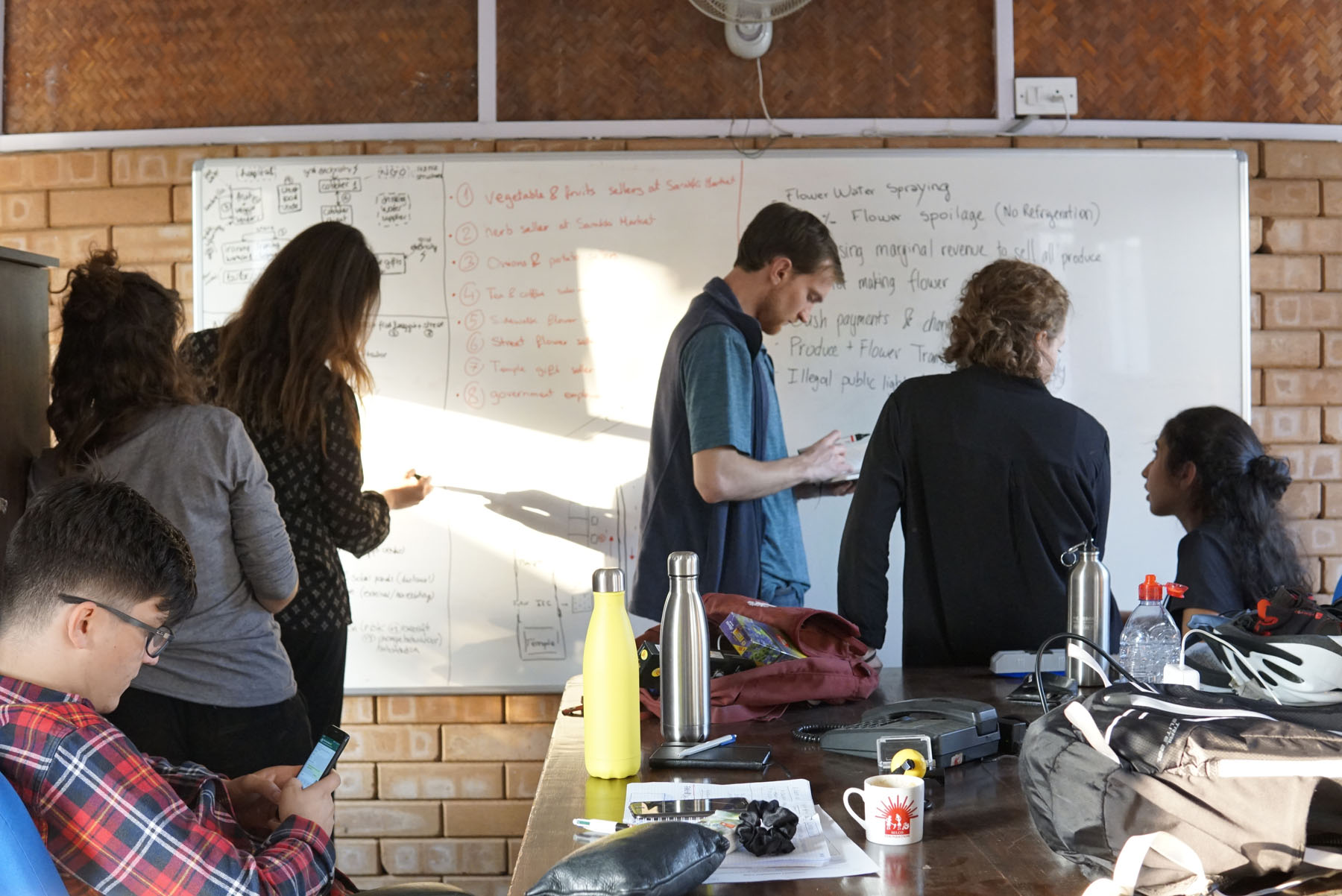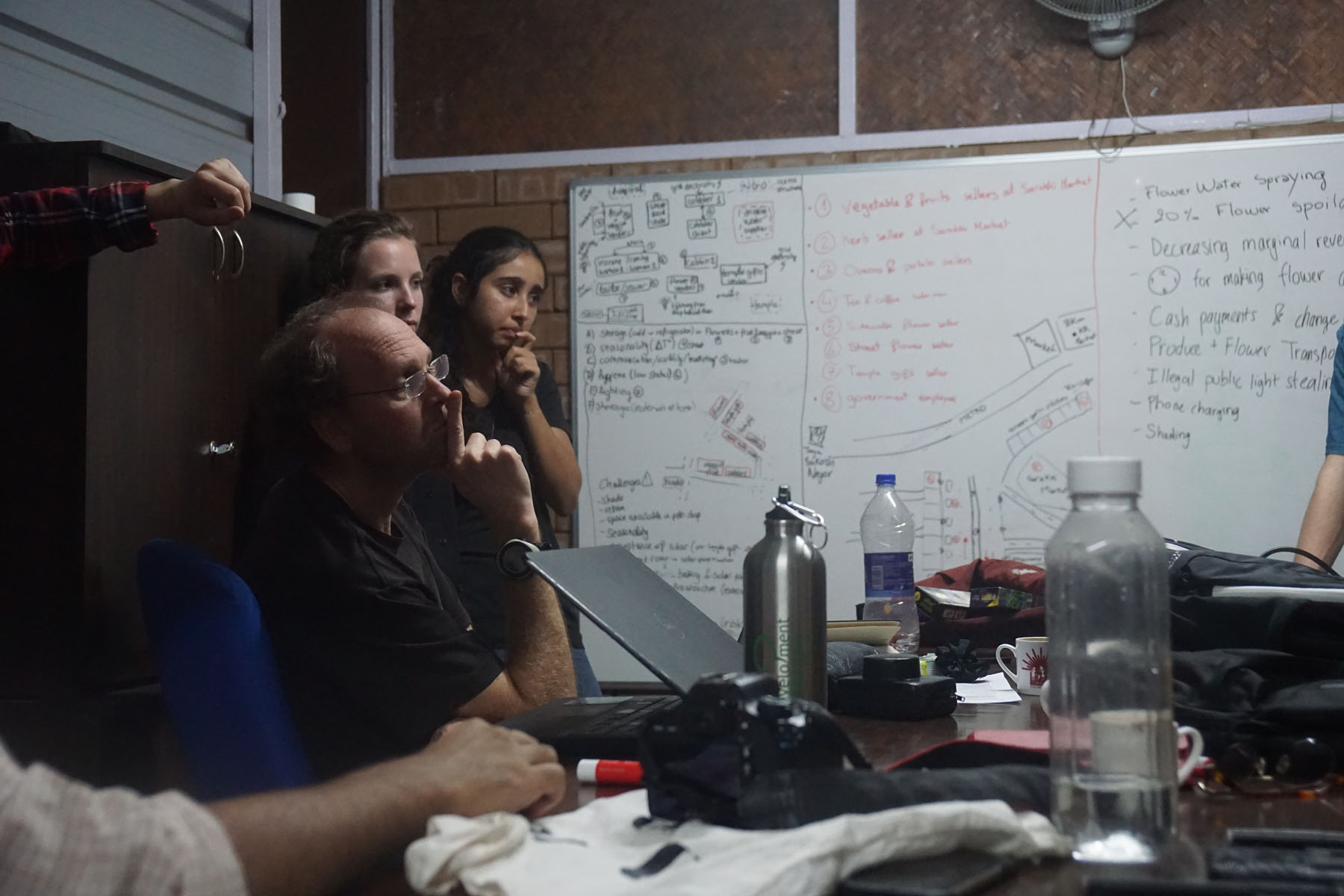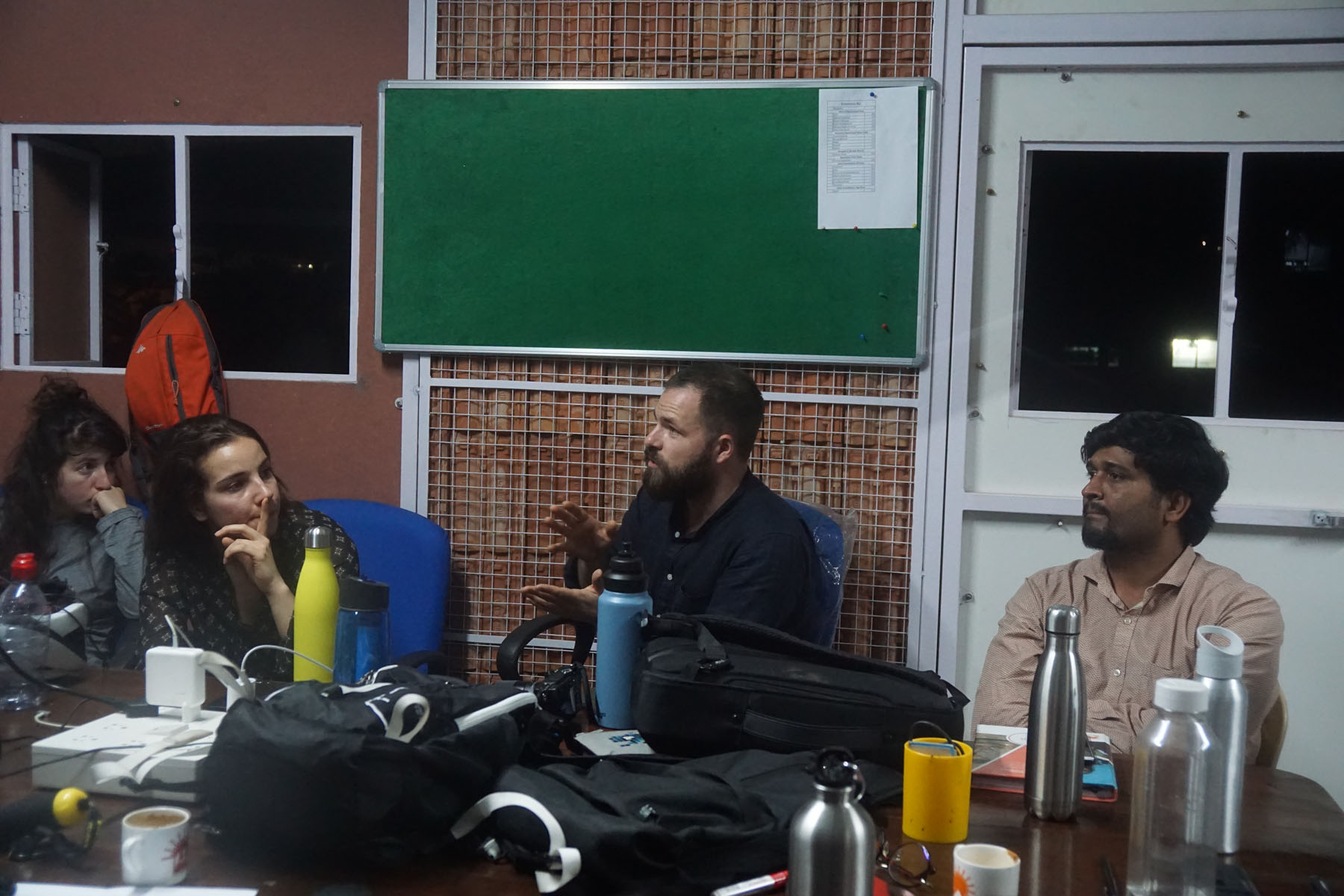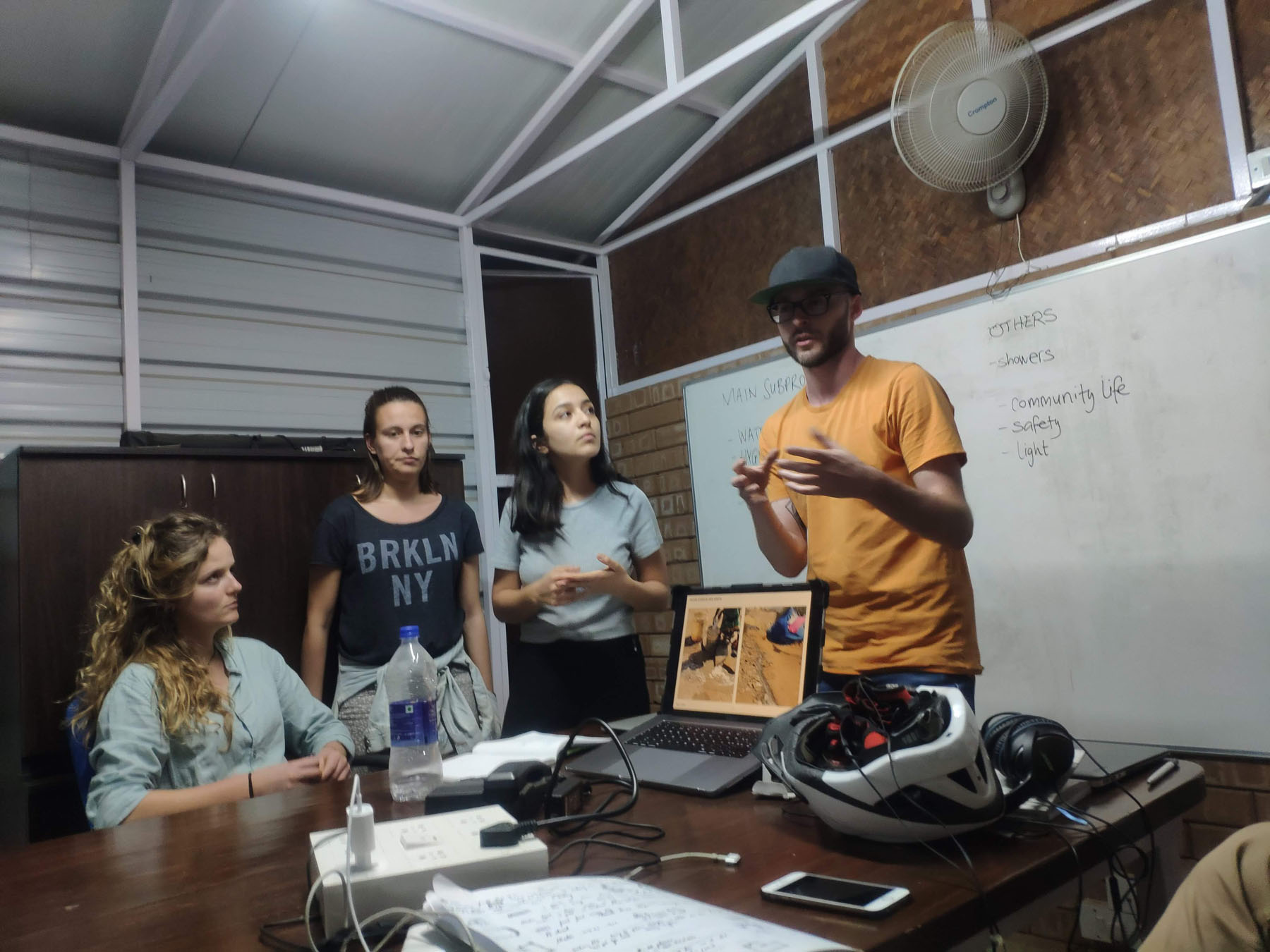After spending a full day meeting and further understanding the challenges of their future users, the students needed a way to synthesize the problem they were going to face.
Day 4: Define
Processing research artefacts to establish one problem statement
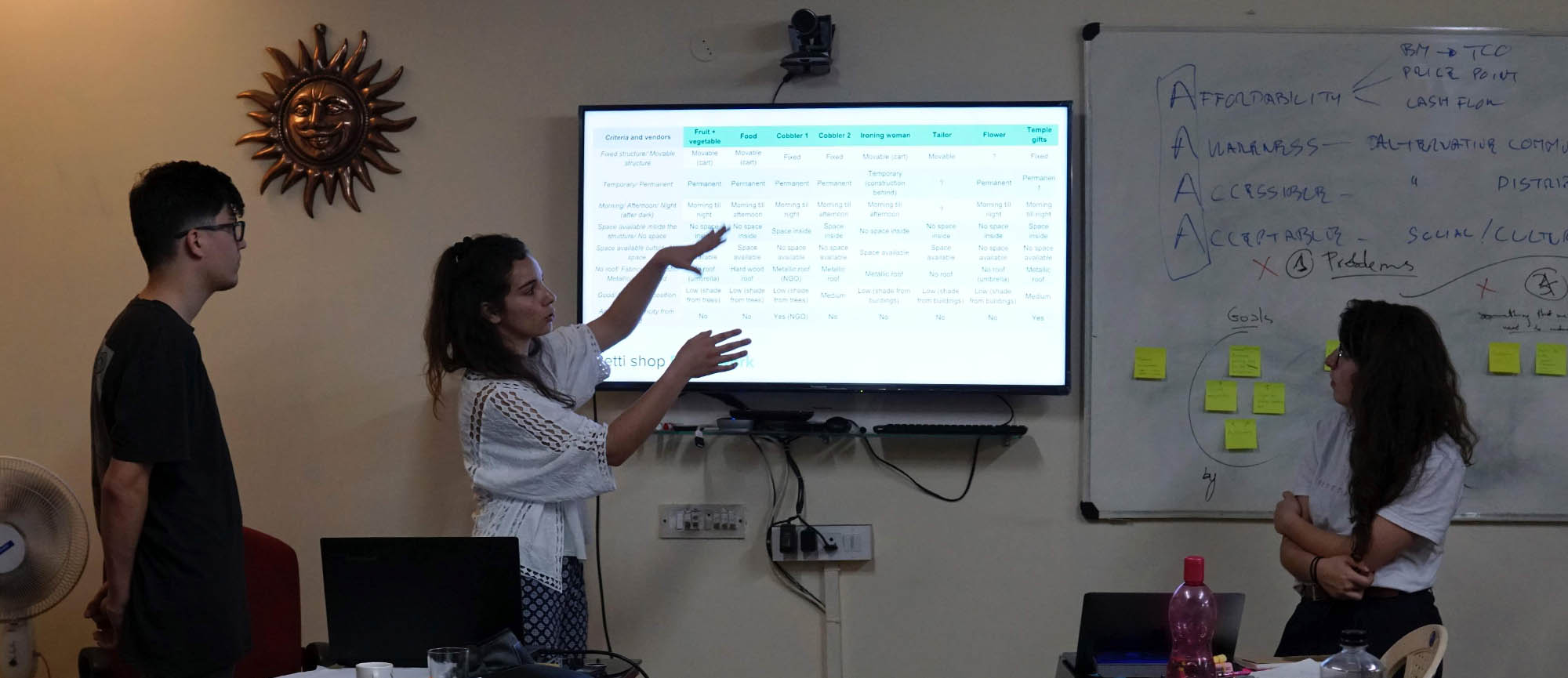
Indeed, the deep research phases can be quite overwhelming, both intellectually and emotionally. In order to have a clear and common goal to solve, the learnings should be boiled down into one main problem statement.
The IEC teams were instructed to look into different aspects of the research gathered:
- Who was observed and interviewed, and was it the user or customer of the IEC?
- What jobs was that person trying to accomplish?
- What were the pains related to that job?
- And what were the gains?
Maps quickly started to emerge on the white boards. First, it was clear that there were different areas where street shops were located:
- Roadside stalls
- Sidewalk stalls
- Market stalls
Second, within these areas, the specific jobs to accomplish, with their pains and gains, would depend on the type of goods sold:
- Vegetable & fruit
- Herbs
- Onions & potatoes
- Coffee & tea
- Flowers
- Temple gifts
Some vendors jobs were common: negotiate prices, receive payments, prepare change for customers, acquire goods from wholesalers and manage unsold goods. Depending on the goods, some people needed to charge their scale on a regular basis, others needed to find ways to refrigerate or keep their organic products longer without spoiling, and some needed to prepare flower adornments in parallel with their sales activities throughout the day.
As desirability for certain groups became clearer, the students went the extra mile by capturing the technical feasibility of setting up an IEC in a given area of the markets observed, and the propensity potential customers had to pay for the service. Members of the SELCO foundation seemed pleased to see the apparition of patterns, and the potential to modularise the energy centres to accommodate more needs with more ease.
The teams focusing on the transitional shelters, still reddened by the sun exposure during their research, decided to cluster the issues they identified into larger problem areas. After much debate in common, the six students drew up the following list:
- Water (storage, sanitation, transport)
- Infrastructure (tent repairability, ventilation, lighting, heat, rodents and insects)
- Cooking (smoke, combustibles, types of food, storage)
- Energy (availability, lighting)
Through the discussion with SELCO, they both decided to tackle a problem that lead to many more issues: the cooking smoke from the current indoor stoves. Indeed, the smoke created by the burning wood would generally get captured in the tents, were air did not flow. One team decided to tackle the problem of the stove itself, whilst the other was interested in the potential of solving the way the tent was built.





